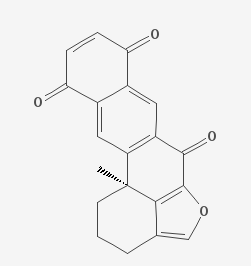
KalanchoeKAL-ən-KOH-ee, also written Kalanchöe or Kalanchoë, is a genus of about 125 species of tropical, succulent plants in the stonecrop family Crassulaceae, mainly native to Madagascar and tropical Africa. A Kalanchoe species was one of the first plants to be sent into space, sent on a resupply to the Soviet Salyut 1 space station in 1979. The majority of kalanchoes require around 6-8 hours of sunlight a day; a few cannot tolerate this, and survive with bright, indirect sunlight to bright shade.
Streptomyces cyaneus is an actinobacterium species in the genus Streptomyces.
Aqualysin 1 is an enzyme. This enzyme catalyses the following chemical reaction
2-deoxy-scyllo-Inosose synthase is an enzyme with systematic name D-glucose-6-phosphate phosphate-lyase (2-deoxy-scyllo-inosose-forming). This enzyme catalyses the following chemical reaction

Xestoquinone is a bio-active isolate of the marine sponge Xestospongia.

Resveratroloside is a stilbenoid glucoside. It can be found in Paeonia lactiflora.
Streptomyces azureus is a bacterium species from the genus of Streptomyces which has isolated from soil. Streptomyces azureus produces the antibiotic thiostrepton.
Streptomyces chartreusis is a bacterium species from the genus of Streptomyces which has been isolated from soil in Africa. Streptomyces chartreusis produces N-deacyltunicamycin, elsamicin A, aminoacylase and chartreusin.
Streptomyces cinnabarinus is a bacterium species from the genus of Streptomyces which has been isolated from soil from a hot climate area. Streptomyces cinnabarinus produces lobocompactol.
Streptomyces exfoliatus is a bacterium species from the genus of Streptomyces which has been isolated from soil. Streptomyces exfoliatus has the ability to degrade poly(3-hydroxyalkanoate). This species produces exfoliatin and exfoliamycin.
Streptomyces filipinensis is a bacterium species from the genus of Streptomyces which has been isolated from soil on the Philippines. Streptomyces filipinensis produces pentalenolactone I, hygromycin A and filipin.
Streptomyces griseoloalbus is a bacterium species from the genus of Streptomyces which has been isolated from soil. Streptomyces griseoloalbus produces grisein.
Streptomyces griseorubiginosus is a bacterium species from the genus of Streptomyces which has been isolated from soil in Russia. Streptomyces griseorubiginosus produces arylsulfatase, biphenomycin A, cinerubin A and cinerubin B.
Streptomyces laurentii is a bacterium species from the genus of Streptomyces which has been isolated from soil. Streptomyces laurentii produces thiostrepton.
Streptomyces mobaraensis is a spore forming bacterium species from the genus of Streptomyces. Streptomyces mobaraensis produces bleomycin, detoxin, piericidin A, piericidin B, reticulol and transglutaminase. Streptomyces mobaraensis is used in the food industry to produce transglutaminase to texture meat and fish products.
Streptomyces phaeochromogenes is a bacterium species from the genus of Streptomyces. Streptomyces phaeochromogenes produces tyrosinate, bromoperoxidase, ditryptophenalin, phaeochromycin A, phaeochromycin B, phaeochromycin C, phaeochromycin D and phaeochromycin E. Streptomyces phaeochromogenes also produces moenomycin and bambermycin.
Streptomyces racemochromogenes is a bacterium species from the genus of Streptomyces. Streptomyces racemochromogenes produces phospholipase D, the acemomycine complex and the streptothricin complex.
Streptomyces rochei is a bacterium species from the genus of Streptomyces which has been isolated from soil in Russia. Streptomyces rochei produces borrelidin, butyrolactol A, butyrolactol B, uricase and streptothricin. Streptomyces rochei has antifungal activity against Fusarium oxysporum f.sp. lycopersici and Aspergillus fumigatus. Streptomyces rochei produces moenomycin and bambermycin. Streptomyces rochei produces amicetin A, amicetin B, amicetin C and streptolin. Streptomyces rochei produces endo-β-N-acetylglucosaminidase mithramycin, amicetin, bamicetin, and plicacetin.
Streptomyces thermoviolaceus is a thermophilic bacterium species from the genus of Streptomyces which has been isolated from composts. Streptomyces thermoviolaceus produces chitinase and peroxidase.
Streptomyces thermovulgaris is a thermophilic bacterium species from the genus of Streptomyces which has been isolated from cow manure. Streptomyces thermovulgaris produces protease.


